Custom color stucco using paint tint.
i have read your stucco site start to finish over the years, and use it as "gospel" as i work on my own house. the formula for real stucco and how to straighten walls were a real blessings as i didnt have any experience when i started this project. just saw your update on the shower with the mottling color. first time i read it it listed a sherwin color as the tint, second time i cant find the color listed . i may be going blind LOL!!.
any chance i can get the color and the amounts of each material used to make it ? sorry to read you sold the truck. put me on a list to buy your stucco book when completed.
We have been using paint tint, also known as universal colorant, since 1999. I was turned on how to do this by the late Don Miles (More info about Don Miles here and here). Don died in 2000, but was a huge influence on me and my work. Don had a website, like mine, and hated EIFS, like me. If you remember, in 1999 AT&T had free long distance service between major cities. Seattle and the Washington, DC area were major cities. These days, we take making long distance phone calls for granted because they are free. I was in close touch with Don by email, and he sent me a lot of info about his jobs by snail mail.
We have been using powder stucco color from California, like La Habra, and Expo. Unfortunately, Expo stucco went out of business. They had a great custom matching service and a color lab.
We had problems with California colors splotching in cold weather. Liquid paint tint doesn't splotch easily, and is available locally. The colors do bleed and fade like powdered stucco color, but that is part of a natural finish. You will need to find a Sherwin Williams store that will do this for you, and do a good job. I have found Benjamin Moore colors come out way too yellow, probably because the chemical composition of the paint is different. Even cross referencing Benjamin Moore colors doesn't work well.
We have been using paint tint, also known as universal colorant, since 1999. I was turned on how to do this by the late Don Miles (More info about Don Miles here and here). Don died in 2000, but was a huge influence on me and my work. Don had a website, like mine, and hated EIFS, like me. If you remember, in 1999 AT&T had free long distance service between major cities. Seattle and the Washington, DC area were major cities. These days, we take making long distance phone calls for granted because they are free. I was in close touch with Don by email, and he sent me a lot of info about his jobs by snail mail.
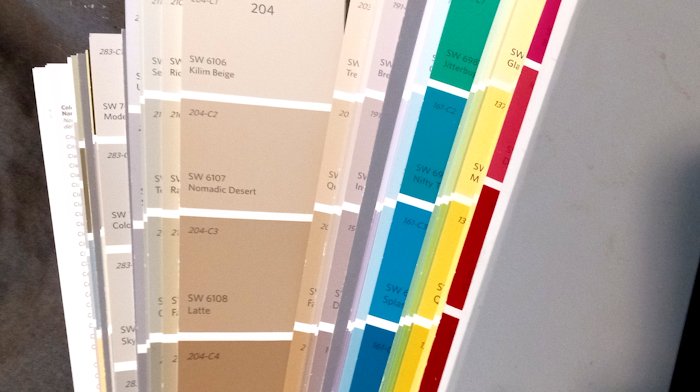
The first step is to pick a color from the fan deck. I got this approved by my customer. My warning is: sometimes these colors come out exactly like the fan, and sometimes they are way off.
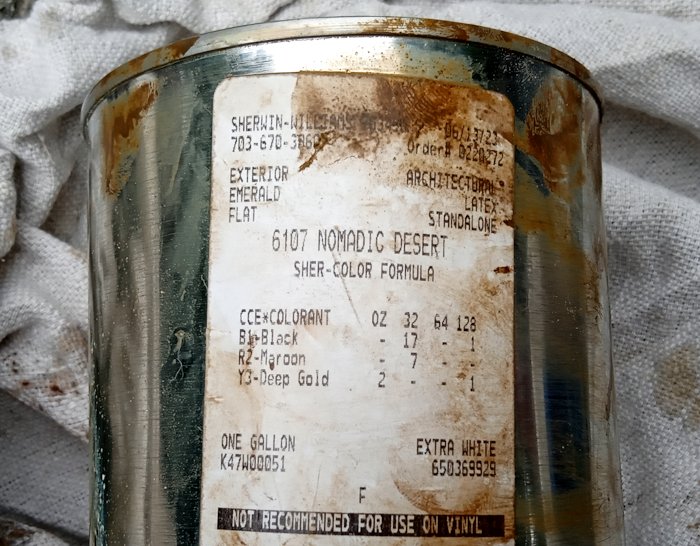
My next step is to get enough color to make 1 gallon of paint to make a sample. I always get exterior emerald flat. Exterior colors don't fade as bad. Emerald is a grade of paint, and the color for flat paint. They put this in a quart can for me. Having the formula on the can is helpful in case I want to tweak the color by adding black, or whatever.
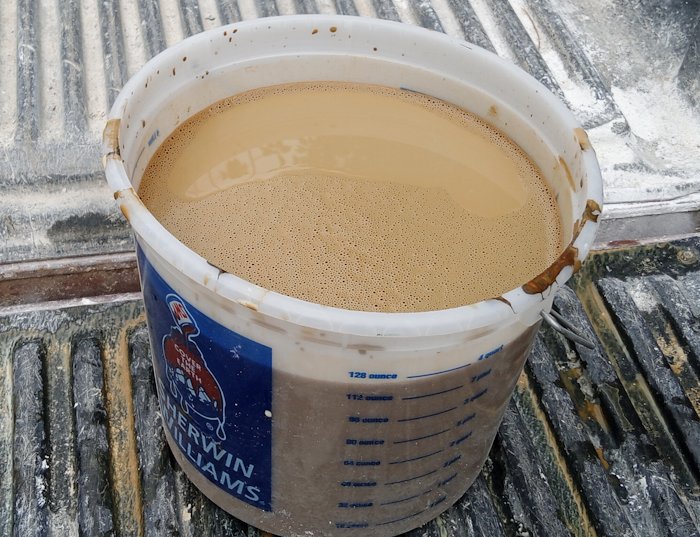
I mixed the color with a half gallon of water and a half gallon of Flex con, an acrylic bonding admixture. There are othe brands of acrylic, also. We use this same method for interior plaster finishes, except we use all water. This can be done for other materials like marmorino, or synthetic finishes.
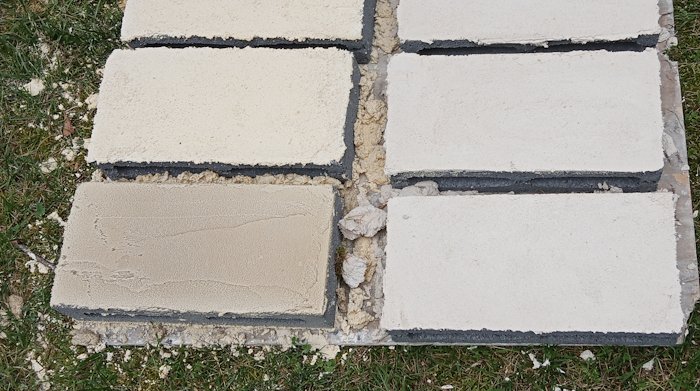
Next, we mix the liquid color in with our dry mix of White Portland cement, white lime, and white sand. These samples are for another job, in casee you are wondering. Blocks are the perfect surface to put sample color on. The block is porous like a cement basecoat and the color comes out just like putting it on the finished wall. The samples can be carried around and put against the wall. or stacked up for a larger view.
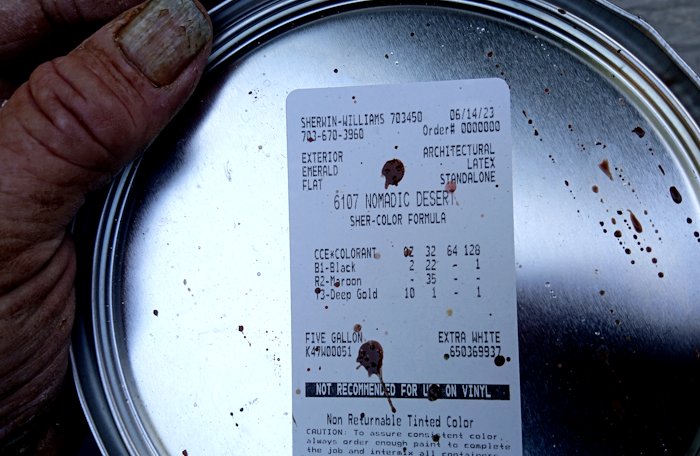
After the samples are approved, I got color from Sherwin Williams put into one gallon cans. Each can has enough color for 5 gallons of liquid mix.
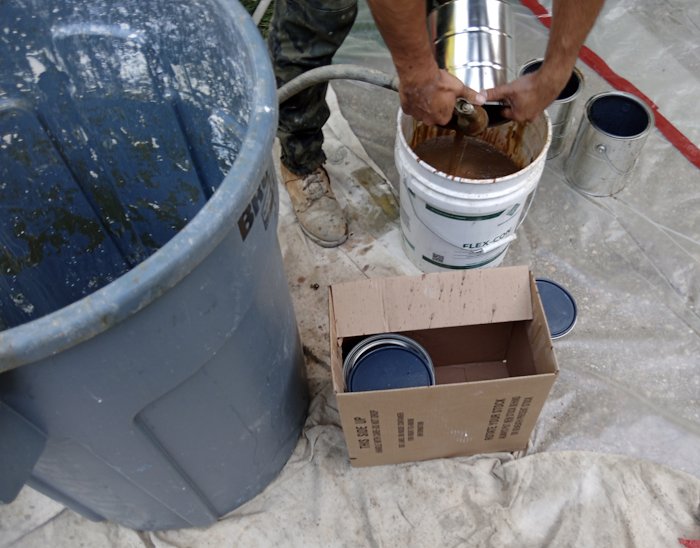
We mixed up 20 gallons of our mix in a garbage can. Here, the color is rinsed out of the can with a hose. The color tends to stick to the can, so it needs to be rinsed out or scrubbed out of the cans. We measured the mix with 5 gallon buckets, adding two 5 gallon buckets of water, and two 5 gallon buckets of Flex con.
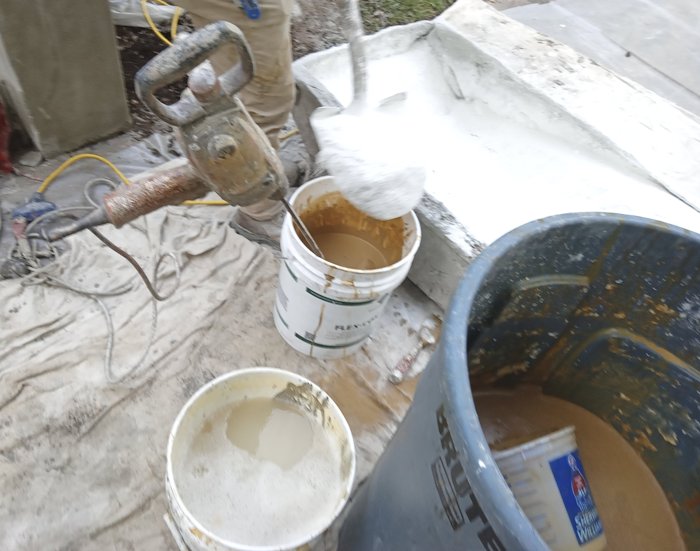
Our dry mix of white Portland cement and white sand is mixed in a mortar box. Our color mix is put into buckets and the dry mix is shoveled into the buckets and mixed with a drill.
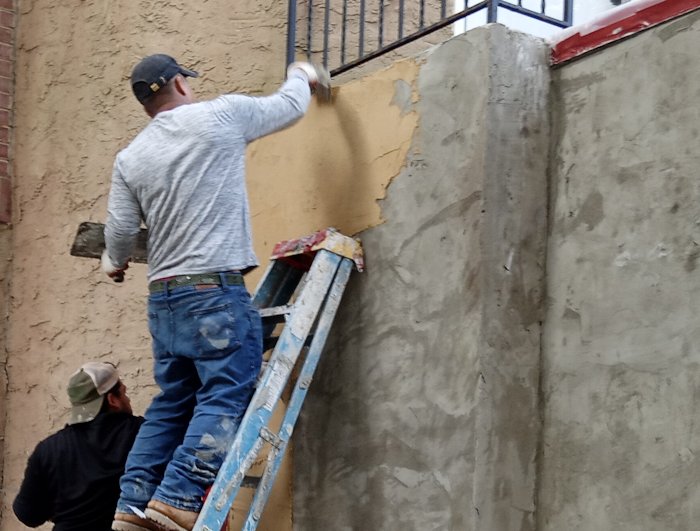
We are putting it on the wall. The color will whiten when it dries, and looks close to the original house.